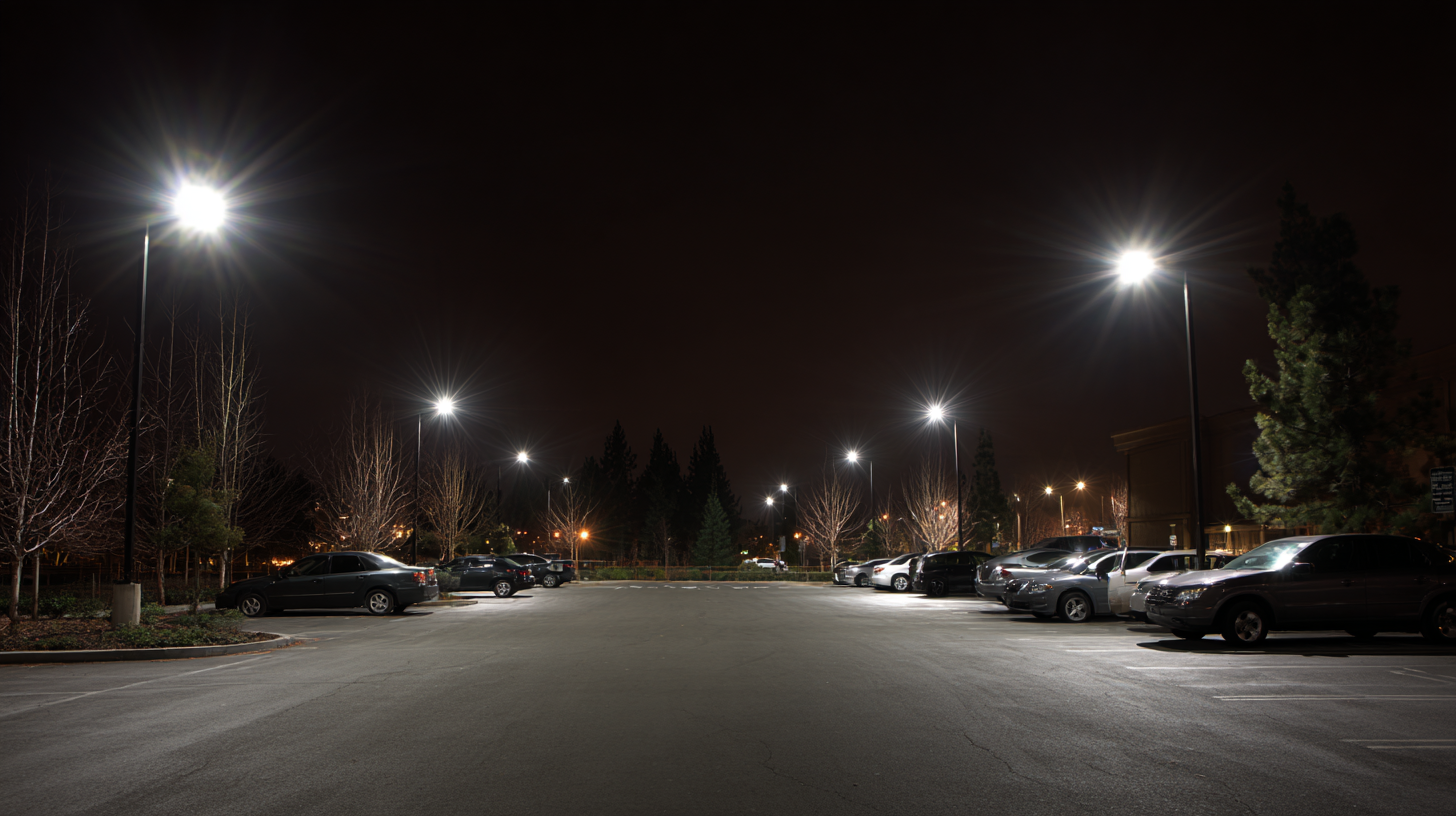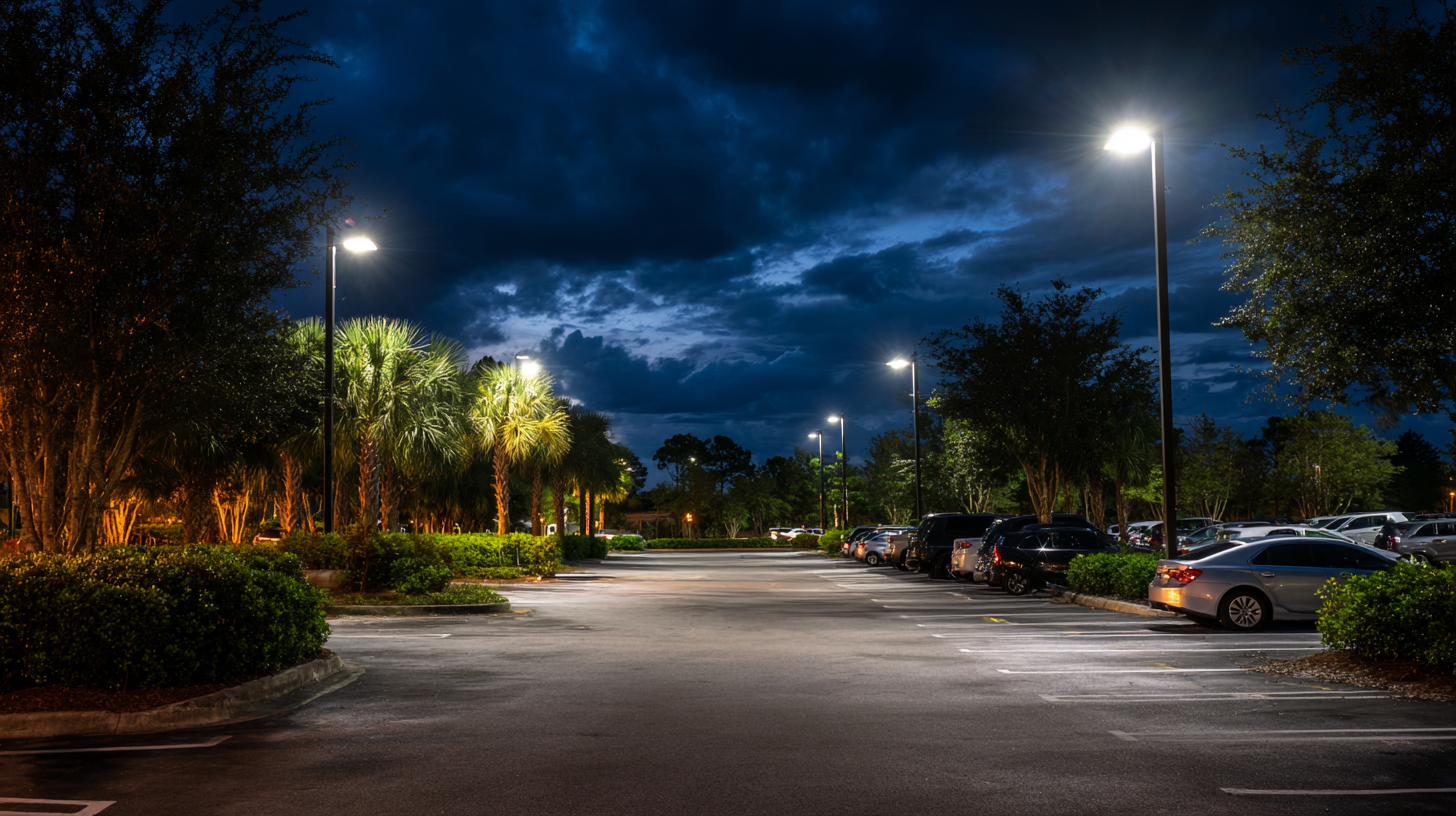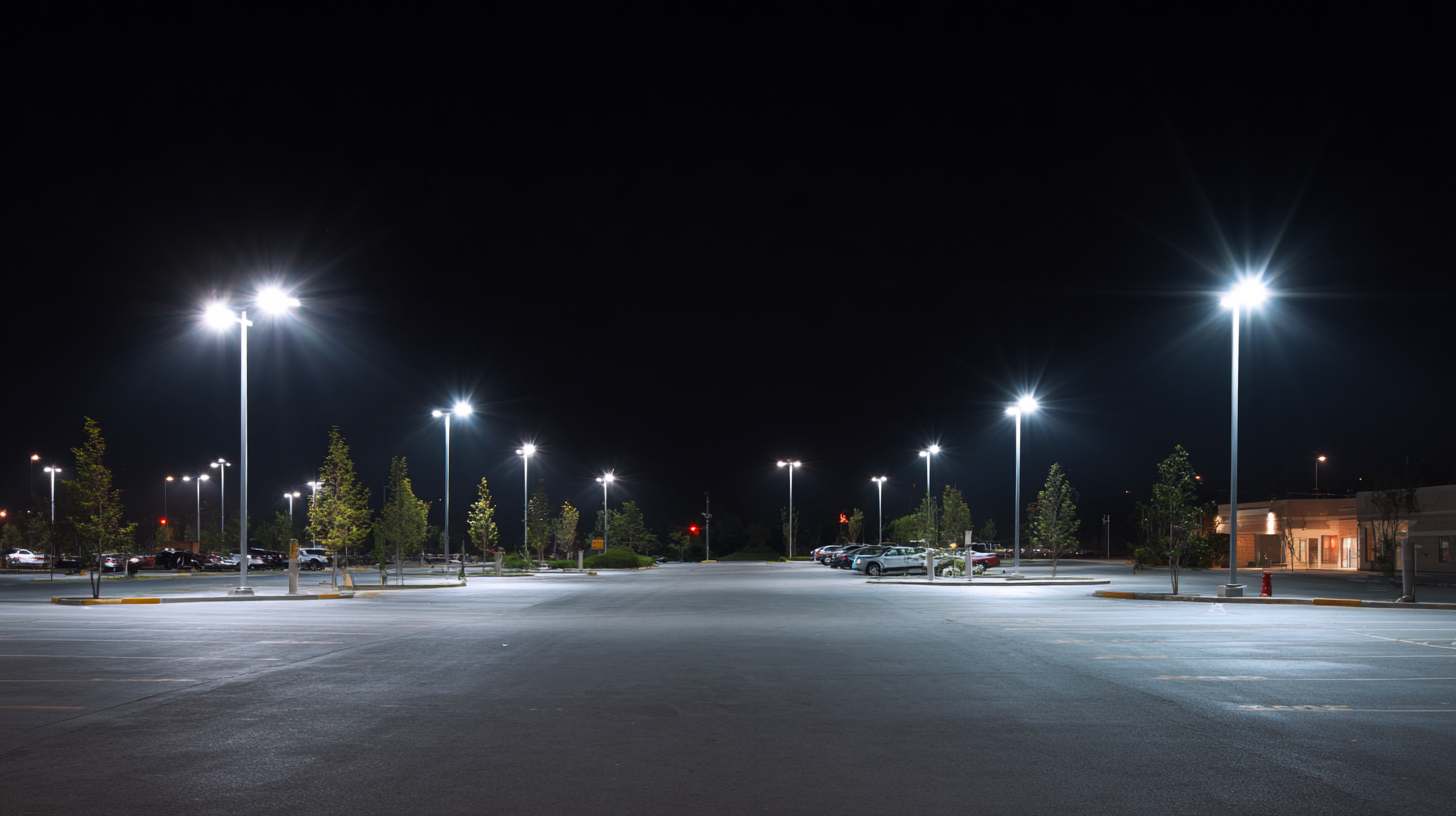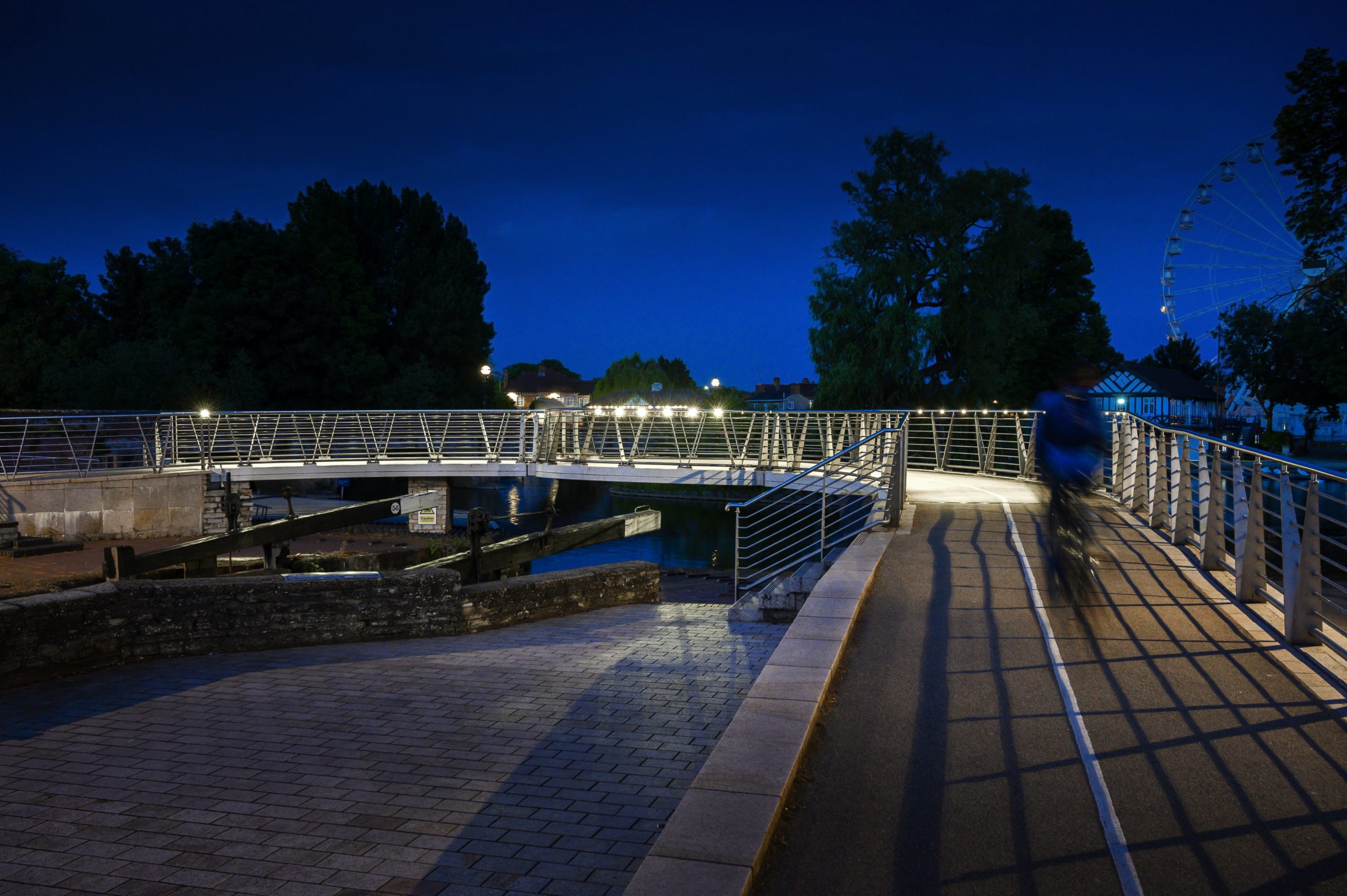Understanding the Different Types of Parking Lot Lighting Solutions
Parking lot lighting is a crucial aspect of urban planning and development, playing a significant role in enhancing safety, security, and aesthetics in commercial areas. According to the Illuminating Engineering Society, properly designed lighting systems can reduce crime rates by up to 30%, emphasizing the importance of effective illumination in parking facilities. Moreover, the U.S. Department of Energy reports that LED lighting can achieve energy savings of 50-70% compared to traditional lighting solutions, offering not only cost efficiency but also environmental benefits. With the growing emphasis on sustainability and energy-efficient solutions, understanding the various types of parking lot lighting is essential for property managers and developers. This guide aims to provide an overview of the different parking lot lighting solutions available on the market, helping stakeholders make informed decisions that meet safety regulations and enhance user experience.

Types of Parking Lot Lighting: An Overview of Common Solutions and Their Benefits
When it comes to parking lot lighting solutions, selecting the right type can greatly influence safety, aesthetics, and operational costs. Common solutions include LED fixtures, fluorescent lights, and metal halide lamps, each offering distinct benefits. LED lighting, for example, is increasingly favored for its energy efficiency; reports indicate that LEDs consume up to 75% less energy compared to traditional incandescent bulbs. This not only reduces electricity costs but also extends the lifespan of the fixtures, leading to lower maintenance expenses over time.
Fluorescent lights, while less efficient than LEDs, are another common choice due to their initial cost-effectiveness. They provide adequate illumination for smaller lots or areas with less vehicular traffic. However, they may require more frequent replacement and have a shorter lifespan compared to LEDs, creating potential hidden costs in maintenance. On the other hand, metal halide fixtures deliver bright, high-quality light, ideal for larger parking areas but are less energy-efficient than LEDs, consuming significantly more power and necessitating a comparison of long-term operational costs. According to the U.S. Department of Energy, upgrading to modern lighting solutions can lead to an overall reduction in energy consumption and enhanced safety, making the choice of the right parking lot lighting a critical operational decision.

Energy Efficiency in Parking Lot Lighting: The Role of LED Technology
When it comes to parking lot lighting solutions, energy efficiency has become a pivotal concern for facility managers and property owners. LED technology stands out as a transformative option, providing not just enhanced illumination but also significant reductions in energy consumption. According to the U.S. Department of Energy, LED lights use up to 75% less energy compared to traditional incandescent bulbs. This shift not only lowers operating costs but also extends the lifespan of lighting fixtures, leading to lower maintenance expenses as well.
The adoption of LED technology in parking lots contributes to improved safety and security for drivers and pedestrians alike. A study from the International Dark-Sky Association indicates that proper lighting can reduce crime rates in parking areas by as much as 40%. Moreover, LEDs provide clearer visibility and uniform light distribution, which is vital for enhancing situational awareness. As businesses strive to align with sustainable practices, investing in LED parking lot lighting not only meets regulatory standards but also promotes a responsible approach to energy consumption. With the potential to reduce greenhouse gas emissions significantly, switching to LED is a win-win for both the environment and the bottom line.

Evaluating Security Enhancements in Parking Lots Through Effective Lighting Strategies
Effective lighting is crucial in enhancing security in parking lots, as it influences both crime prevention and user safety. According to the International Journal of Urban Sciences, well-lit areas are 20-30% less likely to experience criminal activities compared to poorly lit locations. This correlation highlights how strategic lighting solutions can deter potential criminals while providing peace of mind to patrons using these facilities.
In recent years, advancements in LED technology have revolutionized parking lot lighting. Not only do LEDs consume up to 75% less energy than traditional lighting solutions, the bright, uniform light provided increases visibility. The Illuminating Engineering Society points out that effective illumination levels should range from 2 to 5 foot-candles for parking lots, depending on the area’s usage and traffic patterns. By implementing smart lighting controls, such as motion sensors and timers, facilities can further enhance security and efficiency, ensuring that lights are activated only when needed, thus reducing energy waste and creating a safer environment for all users.
Cost Analysis: Initial Investment vs. Long-Term Savings of Different Lighting Solutions
When considering parking lot lighting solutions, a crucial factor is the cost analysis of initial investment versus long-term savings. Different lighting technologies, such as traditional incandescent, fluorescent, and energy-efficient LED lights, come with varying upfront costs and operational efficiencies. For example, while LED fixtures may require a higher initial expenditure, their longer lifespan and lower energy consumption can result in significant savings over time. On average, transitioning to LED lighting can reduce energy costs by up to 70%, making them a financially wise choice for property owners looking to enhance their parking lot illumination.
Furthermore, the maintenance costs associated with different lighting solutions also play a vital role in the overall financial picture. Traditional lighting options often demand frequent bulb replacements, which adds to labor costs and downtime. In contrast, LED lights are designed to last for over 25,000 hours, drastically cutting maintenance frequency and costs. This not only frees up resources but also ensures that parking lots remain well-lit and safe for users. By weighing these factors, property managers can make informed decisions that balance initial investments with long-term operational savings, ultimately leading to a smarter investment in parking lot lighting.
Understanding the Different Types of Parking Lot Lighting Solutions - Cost Analysis: Initial Investment vs. Long-Term Savings
| Lighting Type | Initial Investment ($) | Energy Cost (Annual) ($) | Maintenance Cost (Annual) ($) | Lifetime (Years) | Total Cost Over Lifetime ($) |
|---|---|---|---|---|---|
| LED | 15,000 | 1,200 | 300 | 20 | 24,000 |
| High-Pressure Sodium | 10,000 | 1,800 | 500 | 15 | 37,500 |
| Metal Halide | 12,000 | 1,500 | 400 | 10 | 29,000 |
| Fluorescent | 8,000 | 1,600 | 600 | 8 | 23,800 |
Compliance and Regulations: Understanding Local Standards for Parking Lot Illumination
When considering parking lot lighting solutions, it's essential to navigate the maze of local compliance and regulations to ensure safe and effective illumination. Each municipality often has its own sets of standards that dictate not only the type of lighting but also the intensity and placement of fixtures to meet safety and environmental goals. For instance, guidelines like those issued for Denver outline specific lighting standards that aim to deter crime while also promoting visibility and accessibility for users. Following such regulations not only guarantees safety but also enhances the overall experience for patrons.
Moreover, adhering to approval standards, like those outlined in the DarkSky Approved Luminaires guidelines, is crucial. These documents specify the technical performance needed for luminaires to mitigate light pollution while still providing sufficient illumination for parking areas. Ensuring compliance with these regulatory frameworks not only demonstrates a commitment to responsible development but also positions projects favorably within the community, aligning with broader urban planning and safety objectives. Local authorities often investigate lighting complaints, making it vital for developers to prioritize these regulations to avoid potential issues with enforcement and neighborhood satisfaction.
Parking Lot Lighting Solutions: Compliance and Standard Comparison
This bar chart illustrates the average lumen output per fixture for different types of parking lot lighting solutions. Ensuring compliance with local regulations and standards requires understanding the effectiveness of each type of lighting in illuminating parking lots efficiently.





